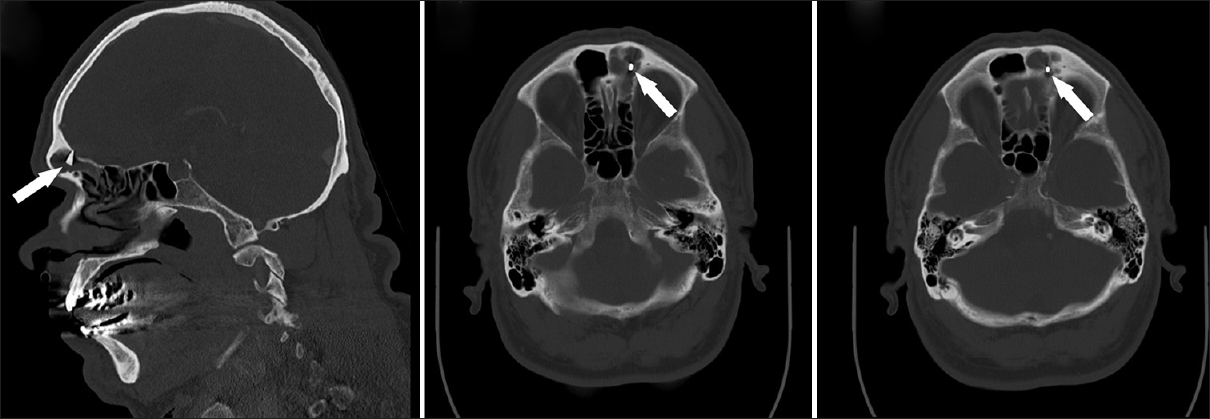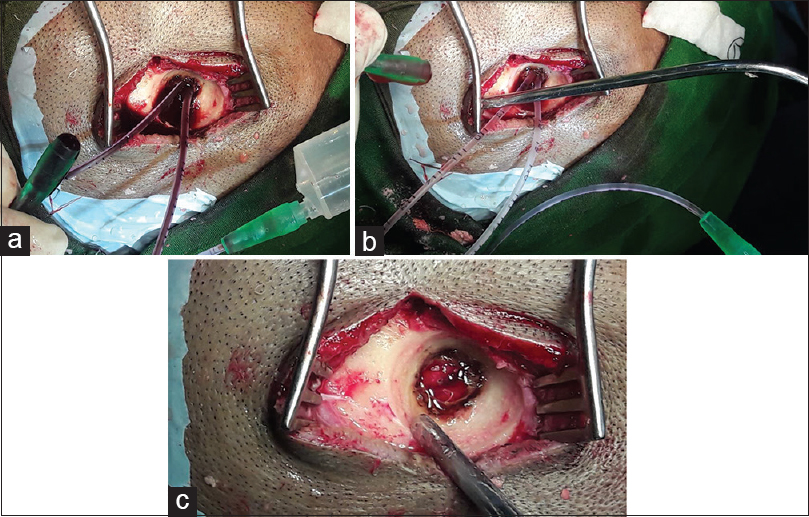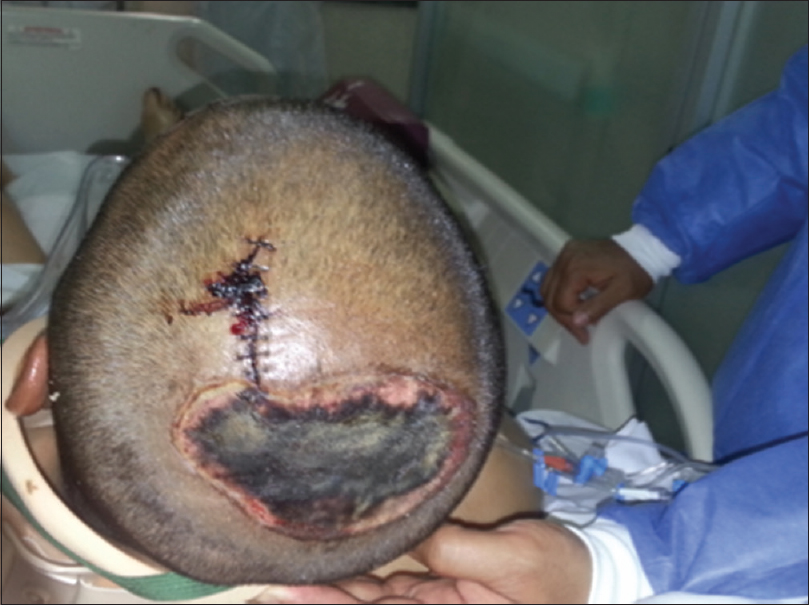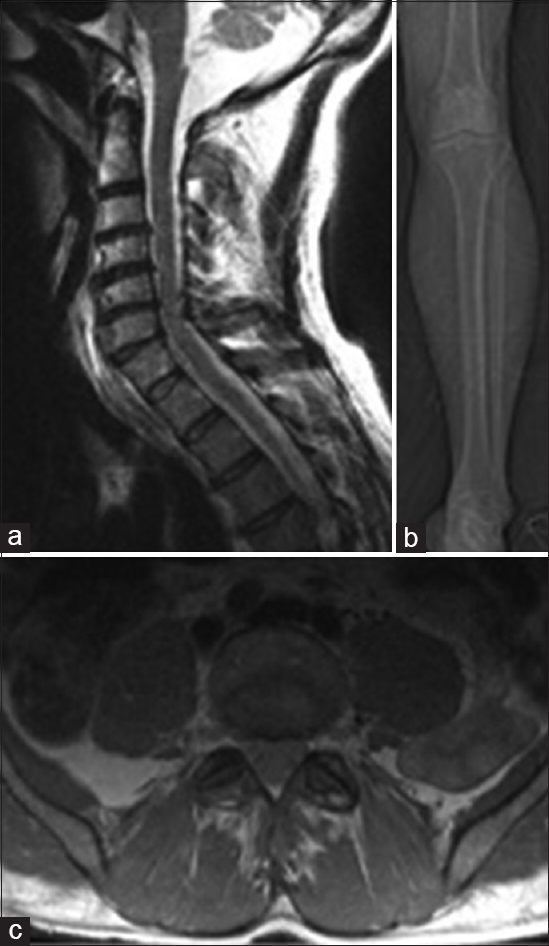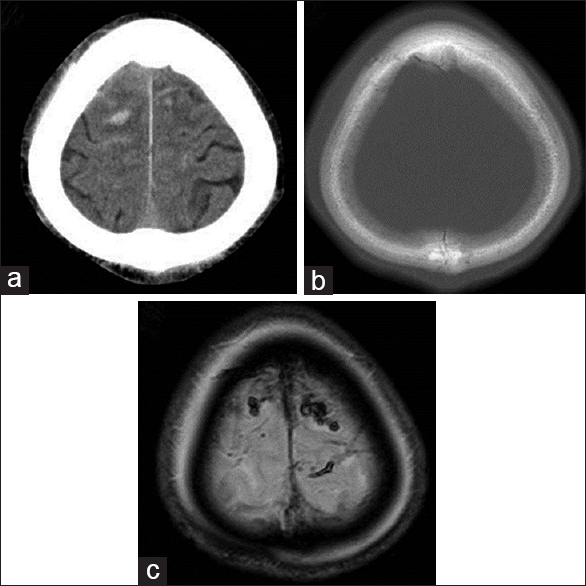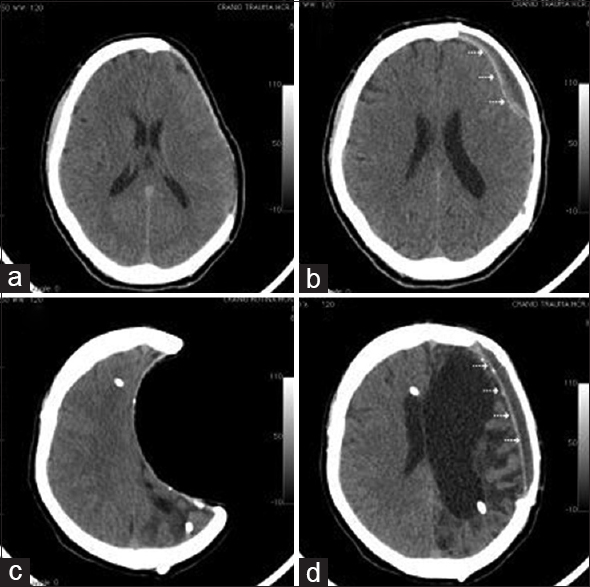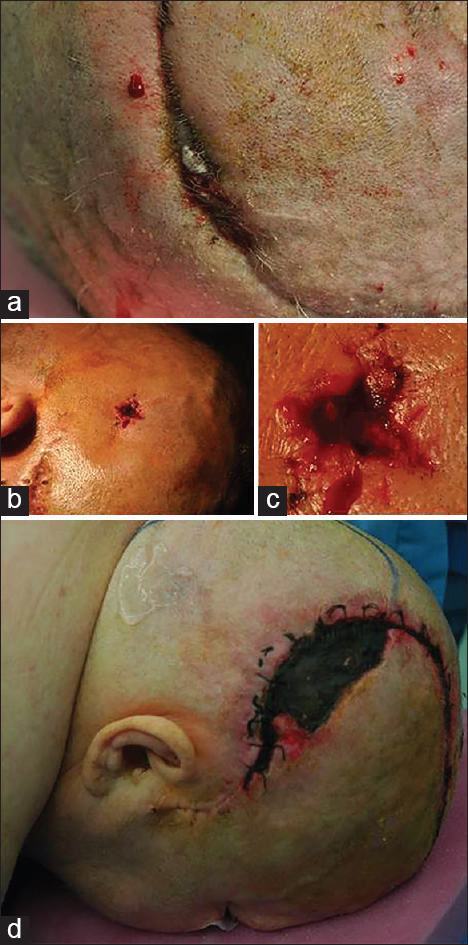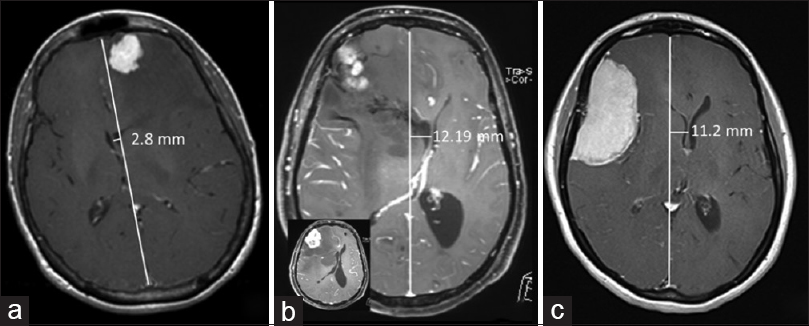Cerebral foreign body granuloma in brain triggering generalized seizures without obvious craniocerebral injury: A case report and review of the literature
Date of publication: 11-Nov-2016
Background:Intracerebral foreign body granuloma is rarely reported. We present the case of a male patient with a cerebral foreign body granuloma.
A review of sub acute subdural hematoma (SASDH) with our institutional experience and its management by double barrel technique (DbT): A novel technique
Date of publication: 09-Nov-2016
Background:Subacute subdural hematoma (SASDH) is an entity which is yet to capture the popular imagination among the neurosurgeons. Its management is often equated clinically to that of the chronic subdural hematoma (CSDH). However, their neurological deterioration is usually rapid, which seems to align them with acute subdural hematoma (ASDH). We proceed for their epidemiological evaluation. The advantages of a novel “double barrel technique (DbT)” over the conventional burrhole drainage are also presented.
Penetrating thoracic spinal cord injury with ice pick extending into the aorta. A technical note and review of the literature
Date of publication: 09-Nov-2016
Background:Penetrating spinal cord injuries pose a great challenge to both patients and the treating physicians. Although the overall incidence of penetrating spinal cord injury is the highest in the military, the ubiquity of guns in our society continues to make penetrating spinal cord injury prevalent in the civilian population. These types of injuries are particularly complicated because, beyond the trauma to the neural elements and supporting structures, other organs can be affected and a team approach is required for successful treatment.
Brain hemorrhage after electrical burn injury: Case report and probable mechanism
Date of publication: 09-Nov-2016
Background:High-voltage electric injury may induce lesion in different organs. In addition to the local tissue damage, electrical injuries may lead to neurological deficits, musculoskeletal damage, and cardiovascular injury. Severe vascular damage may occur making the blood vessels involved prone to thrombosis and spontaneous rupture.
CT-negative, MRI GRE-positive primary motor cortex contusion causing isolated foot drop
Date of publication: 09-Nov-2016
Background:Isolated acute foot drop due to traumatic brain injury is exceedingly rare and is often misdiagnosed during initial evaluation. Here, we present the case of a patient who presented with left foot drop after falling off a bicycle.
Paraplegia caused by cerebral contusions in the bilateral precentral gyri
Date of publication: 09-Nov-2016
Background:Paraplegia is mainly caused by spinal cord disease and rarely occurs due to head trauma. In this report, we describe a case of paraplegia caused by cerebral contusions in the bilateral precentral gyri.
Polymethylmethacrylate imbedded with antibiotics cranioplasty: An infection solution for moderate and large defects reconstruction?
Date of publication: 09-Nov-2016
Background:In cases where autologous bone graft reconstruction is not possible (such as comminuted fractures, bone graft reabsorption, or infection) and the use of synthetic material is required, polymethylmethacrylate (PMMA) use is a safe and efficient solution. Studies comparing the incidence of postoperative complications between autologous and synthetic cranioplasty are heterogeneous, not allowing a conclusion of which is the best material for skull defects reconstruction. Current medical literature lacks prospective well-delineated studies with long-term follow-up that analyze the impact of antibiotic use in PMMA cranial reconstruction of moderate and large defects.
Skin flap complications after decompressive craniectomy and cranioplasty: Proposal of classification and treatment options
Date of publication: 09-Nov-2016
Background:The list of complications reported after decompressive craniectomy (DC) and cranioplasty is progressively increasing. Nonetheless, the exact incidence of these events is still ill-defined. Problems affecting skin flaps after DC and cranioplasty have never been accurately analyzed in papers and their impact on patients’ prognosis is largely underestimated.
Emergency decompressive craniectomy after removal of convexity meningiomas
Date of publication: 26-Oct-2016
Background:Convexity meningiomas are benign brain tumors that are amenable to complete surgical resection and are associated with a low complication rate. The aim of this study was to identify factors that result in acute postoperative neurological worsening after the removal of convexity meningiomas.


